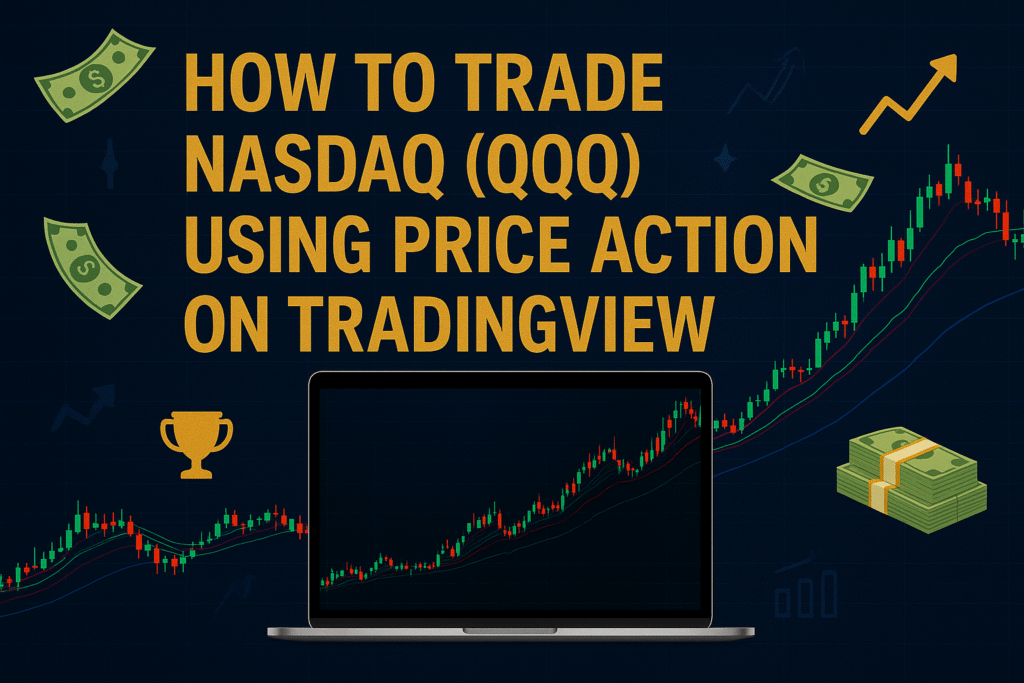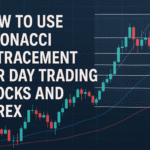
If you want to tackle those wild financial markets nowadays, mastering price action trading is honestly one of the best things you can do, particularly with hot items like the Nasdaq-100 ETF (QQQ). So, if you’re a trader looking to step up your game and dominate those Nasdaq swings, go to TradingView for all the tools you need to master those price action skills.
This guide is going to walk you through trading Nasdaq (QQQ) using price action on TradingView, step by step. Whether you’re new to this or you’ve been doing it a while, these tips are gonna make you more consistent and more confident.
Why Trade the Nasdaq (QQQ)?
Okay, let’s discuss why QQQ has become a favorite among traders before we dive into those price action strategies:
- Liquidity: With deep books and close spreads, ideal for day trading.
- Strong signals: Technology shares tend to make strong, direct moves.
- Volatility: Plenty of intraday movement to capture several opportunities for scalping, day trading, or swing trading.
Smaller accounts have lower margin requirements when trading through ETFs than when fiddling around with futures contracts. Combining these with a solid price action strategy, QQQ becomes a goldmine for experienced traders.

What Is Price Action Trading?
Price action trading means making trading decisions based purely on the price movements of an asset, without relying heavily on indicators. It’s about reading the market structure, candlestick patterns, and key support/resistance levels to anticipate future moves.
Why price action works:
- It reflects real-time market sentiment.
- It assists you in responding to what’s currently happening, not what previous indicators are signaling.
- It keeps your charts organized and makes decisions simple.
Price action comes to life on TradingView with its impressive charting, customizable time frames, and tidy drawing tools.
Explore our newest tools designed to enhance your Forex trading experience effortlessly Check HERE
Preparing TradingView for QQQ Price Action Trading
Before you start analyzing QQQ, make sure your TradingView workspace is properly optimized:
- Timeframes: Take a look at various timeframes such as 5-minute, 15-minute, and 1
- Templates: Create a clean, no-indicator chart template for pure price action analysis.
- Drawing Tools: Familiarize yourself with tools like horizontal lines, trendlines, Fibonacci retracements, and rectangles for marking supply/demand zones.
Optional overlays:
- Volume Bars: Helps confirm breakout strength.
- VWAP: Acts as dynamic intraday support/resistance.
TradingView has this really convenient alert feature—just set your alerts on key levels, so you can pounce on things immediately without having to watch charts all day long.
Key Price Action Techniques to Trade QQQ on TradingView
Here are some cool tricks that are quite reliable when trading Nasdaq QQQ:
1. Determining Support and Resistance Levels
Support and resistance levels form the foundation of price action trading.
- Support: It’s a price level where people continue to jump in, driving up the price.
- Resistance: A level where sellers dominate, pushing prices lower.
View TradingView’s horizontal line feature to identify areas where the price has reversed in the past. Take a look at those cluster areas where a concentration of rejections dropped on higher levels. When trading QQQ, these zones often form around whole numbers like $350, $355, $360.
2. Trading Breakouts and Fakeouts
These breakouts occur when the price completely penetrates a significant level of resistance or support. Fakeouts (false breakouts) occur when the price appears to break a level but quickly reverses.
How to trade it:
- Just wait for a breakaway candle to close above resistance or below support.
- Confirm with above-average volume.
If there ends up being a fakeout, watch for a reversal setup and then re-enter the range.
TradingView’s bar replay feature is great for practicing distinguishing breakouts from fakeouts in past QQQ sessions.
3. Mastering Candlestick Patterns
Certain candlestick patterns are excellent at identifying momentum reversals:
- Pin Bars: Long wicks showing rejection of a level.
- Engulfing Patterns: Strong reversal signals when one candle engulfs the previous.
- Inside Bars: Consolidation that often leads to explosive moves.
Study these patterns on 15-minute and 1-hour charts when trading QQQ. Combine them with your support/resistance zones for higher accuracy.
4. Trendline trading, indeed
Drawing trendlines helps visualize dynamic support and resistance.
- Just connect trendlines by joining together two or more higher lows if the trend is upwards, or lower highs if trending downwards.
- Strong trendlines often provide excellent entry points during pullbacks.
TradingView’s magnet tool makes drawing precise trendlines on QQQ easy and fast.
5. Places where supply and demand reside
Supply and demand trading is really fancy price action.
- Supply zones: Regions where traders went in aggressively earlier.
- Demand zones: Areas where aggressive buyers dominated.
Be aware of these points when noticing a sudden spike from a consolidation range.
On TradingView, pick up the rectangle tool to designate those regions and base your trades upon them.
Developing a simple price action strategy for QQQ
Here is a plan that you can begin today:
- Mark key daily support and resistance levels.
- Switch to the 15-minute chart when the markets open.
- Wait for the price to respond at these levels:
- Look for rejection candles, engulfing patterns, or when price touches trendlines.
- Entry trigger: After a strong rejection candle + confirmation by the next bar.
- Stop loss: Place it slightly outside of the resistance/support level.
- Take profit: 1:2 or 1:3 risk/reward ratio—or next major level.
Example:
Okay, so if QQQ is beginning near yesterday’s resistance and then it forms this bearish engulfing candle there, you may want to short it with a stop just above that resistance and target the next support zone.
Tips for Mastering Nasdaq Price Action Trading
- Stay patient: Not every day offers clean setups—wait for your plan.
- Risk small: Intraday trading QQQ can be volatile; keep risk per trade below 1-2% of your account.
- Review daily: Analyze winning and losing trades using TradingView’s replay mode.
- Adapt to market conditions: Trend days require breakout strategies, choppy days require mean reversion techniques.
TradingView notebook feature is a wonderful tool to record your trades and identify trends as they form.
Common Errors to Avoid When Trading QQQ through Price Action
- Overtrading: Stick to the best setups. Trading every wiggle leads to unnecessary losses.
- Ignoring higher timeframes: Always check the 1-hour and daily charts to align your trades with bigger trends.
- Be cautious during trades when news breaks! Nasdaq can fluctuate everywhere when something happens during CPI or FOMC meetings—just ease up around those situations!
- Don’t over-analyze your charts: Simple charts equal clear thoughts. Just concentrate on support, resistance, trendlines, and significant candlestick patterns.
Conclusion: Here’s why price action absolutely rocks on Nasdaq (QQQ)
By 2025, when algorithmic trading goes crazy in the markets, price action remains one of the most reliable, if not coolest, means of determining what the market truly desires.
Knowing where the buyers and sellers are when you’re trading QQQ provides you with a good strategy, and TradingView’s amazing tools make it really simple and efficient to accomplish this.
By focusing on clean levels, mastering candlestick patterns, and maintaining discipline, you can trade the Nasdaq with much greater confidence and control.



Pingback: Best Indicators for Price Action Trading: 2025 Pro Strategy Guide - Trading Views
Pingback: Trading the NASDAQ: Top Stocks to Watch in 2025 - Trading Views